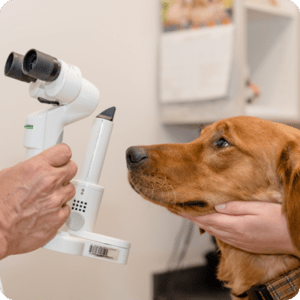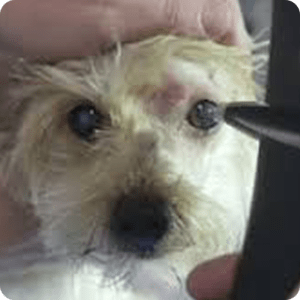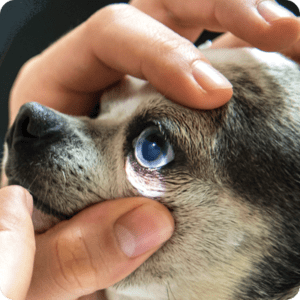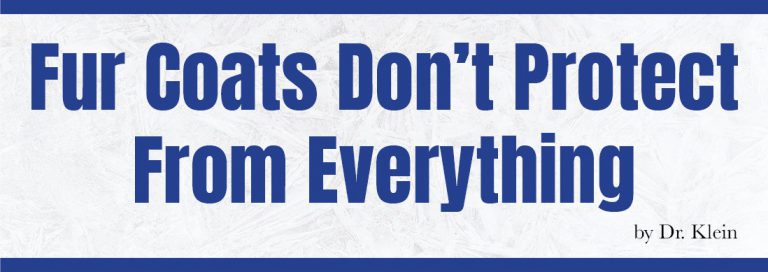What do you see when you look into your pets’ eyes?
Likely love, affection, beauty, trust… all the things that made you fall in love with your pet the first time you saw him or her. But did you also know you could help the health of your pets’ eyes by just looking at them?
Owner observation for changes in the eyes is a great way to get an idea of whether or not a trip to the vet is in order. Your pet depends on you to notice problems, and careful observation of the way your pet looks and acts is a critical first step of responsible pet care.
How To Detect Eye Problem In Animals?
- Asymmetry – Do the eyes look like each other? Are the face and head symmetrical when comparing right to left?
- Unusual discharge – which can be tears, mucus, crusts, etc. and vary in color from clear to red, yellow, green, brown, black or white. Often, some degree of discharge may be normal
- Color changes – including redness, cloudiness, or any other abnormal color to one or both eyes
- Bloodshot appearance – check this by gently lifting up the upper eyelid of the eye and look at the whites of the eyeball. Compare this color to the color of the whites of the other eye
- Squinting – especially if squinting is persistent, or if it involves just one eye. Of course, there are certain normal circumstances when a certain degree of squinting is to be expected, such as sudden bright light
- Rubbing – any behaviors that might indicate eye discomfort
- Behavior changes – including hesitation, bumping into things, an inability to react to things he/she used to, especially if persistent
With time, you will be able to get an idea of what is normal for your pet. Remember that sometimes there are previous issues that cause asymmetry or a “change” that is not necessarily a problem.
But if you note new changes, especially if they are getting worse, or causing pain, a trip to your veterinarian should be scheduled. The more severe the changes, the sooner you should seek care. If you aren’t sure, a veterinary opinion can help reduce your fears, or at least get you on the path to treat a problem.
What Are The Common Eye Problems In Animals?
Corneal Ulceration
This is a break in the “skin” of the surface of the eye. An injury or other reasons may cause this skin to be removed, leaving a “bare” area. This may be just a small area, involve the entire cornea, or be some size in between. It may be infected or not infected. And there may be any number of other complicating factors. Corneal ulcers are typically quite painful, and may manifest as squinting, rubbing, tearing or other discharge, and a bloodshot appearance. The third eyelid, a fleshy membrane in the inner corner of the eye, may be elevated, causing the eye to appear “rolled back.” More serious signs include cloudiness, a visible irregularity on the eye surface, and marked pain, or even eye rupture or vision loss.
The spectrum of severity of this problem is wide, and so the prognosis, or chance of resolution/improvement, is also highly variable. Topical medications (eye drops and/or ointments) and eye protection are often minimally required, but sometimes surgery is needed, depending on the severity. Animals (particularly dogs) with flatter faces and more prominent eyes are especially predisposed to ulceration.


Dry Eye
This is a relatively common problem in dogs. In the most common form of dry eye, the water component of the tears is reduced, allowing lots of frequent mucus buildup and often scarring of the eyes as well. Redness, persistent discharge, and crusting around the affected eye(s) are common clinical signs, though discomfort is not typical. More cases will respond well to medications than not, however, even in those that do well with medications, lifelong topical medications are still generally required.
Cataract
These are white opacity of the lens of the eye. The lens, located inside the eye behind the iris (the part of the eye that gives it its color), is normally optically clear, and helps the eye to focus. However, if a cataract forms, the lens becomes cloudy, thus blocking light from reaching the light-sensitive retina in the back of the eye. Like in people, if a cataract is opaque and extensive enough, vision loss can result. Cataracts may develop in one or both eyes to varying degrees. Most commonly, aging or a genetic tendency for cataract development can be the cause, though diabetes is another common cause of rapid and severe cataracts. The presence of cataracts can also cause secondary problems in the eye, sometimes severe.
Cataracts alone should not be uncomfortable or cause the eyes to be bloodshot, so if the eye(s) look abnormally white, and especially if also bloodshot or uncomfortable, veterinary care should be sought. Elective cataract surgery may be an option for some animals, but whether this is possible for any individual is best determined by a veterinary ophthalmologist.
Glaucoma
This is a condition involving increased intraocular pressure, which causes pain and vision loss. This increase in pressure inside the eye is often marked and rapid in onset, making the changes sudden, severe, and dramatic. Typical clinical signs in this situation include an extremely bloodshot eye, cloudiness, third eyelid elevation, and vision loss. Pain, including squinting, rubbing, and a sensitivity to touching the head, may be noticed. After the disease has been present for some time, the eyeball may actually even enlarge, making it look bulgy and prominent. All of the above are potentially serious signs and warrant a visit to a doctor.






